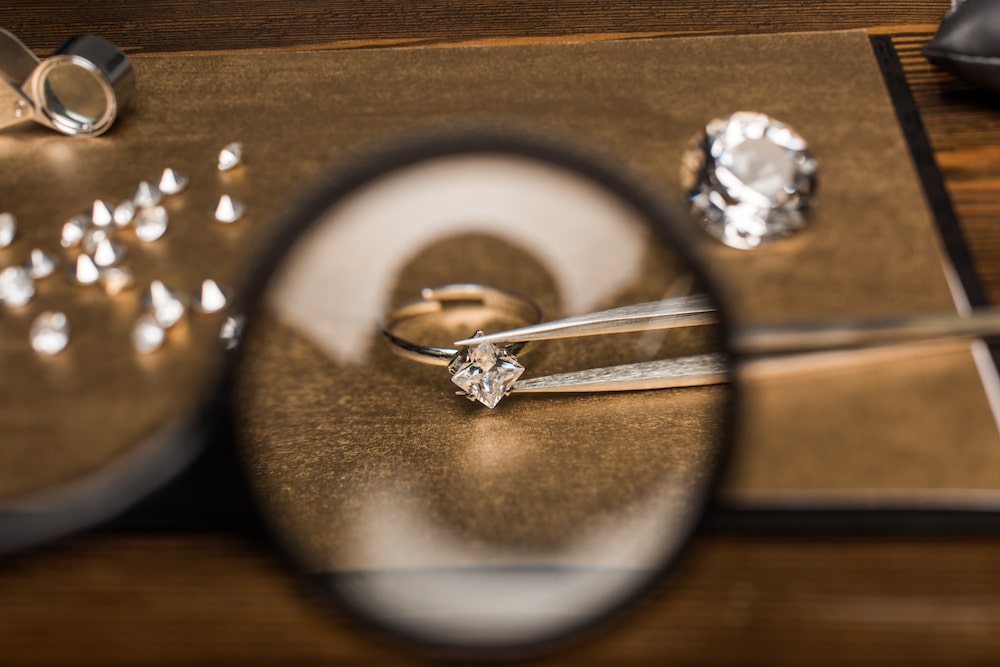
Whether you’re buying gemstone jewelry for yourself or a loved one, there are a few things you should keep in mind while shopping. The 4Cs of diamond buying—carat, color, clarity, and cut—can be used for many gemstones as well. However, the specifics will differ.
You will also want to keep in mind the differences between natural, lab-created, and imitation gemstones. Similarly, some gemstones are enhanced or treated.
And, finally, wondering where to buy gemstones and related jewelry? Let’s break it all down in this gem guide.
Gemstone Buying Guide
When buying a diamond, you should look at cut, color, clarity, and carat. These attributes can also be used when buying nearly any other gemstone. You just have to know what you’re looking for with a particular gem. For this post, let’s use diamonds and pearls.
How a gemstone has been cut will affect its value. Precise cuts can bring out more sparkle in a diamond. Yet you wouldn’t want to cut a pearl. In this case, comparing shapes—such as round, drop, and baroque—will inform you of a pearl’s quality.
Color seems like an easy characteristic to understand. However, the color of a specific gemstone can offer specific details (like whether or not it has been heat-treated) and affect the price. For example, a colorless diamond is rare and therefore can be more expensive than a diamond that exhibits some color, which can range from light yellow to light brown.
Clarity relates to internal inclusions and external blemishes. It’s very rare to find diamonds without either. Yet most inclusions and blemishes can only be seen under magnification. The greater the clarity, the more stunning the piece—and the higher the price. Instead of clarity, pearls are judged by blemishes on the surface and nacre quality (the substance that makes up the luminous layers of pearls).
Finally, carat is the measurement of physical weight in metric carats. You would assume that the value of a gemstone increases as the size increases. Yet the value is not proportionate to the size increase. For example, assuming cut, color, and clarity are all the same, a one-carat diamond will cost more than twice the price of a half-carat diamond. And, two diamonds that are equal in weight may cost different amounts because the other factors are different.
There is a lot to consider when factoring in all of these attributes. And yet some gemstones have even more to think about. Take an opal for example. Specific patterns—like “stained glass” and “peacock”—are examined.
How Are Gemstones Created?
Many people prefer to go for natural gemstones. And yet others simply don’t mind having enhanced or lab-created ones. The choice is up to you, but what is the difference?
Natural gemstones are mined from the earth. They’ve been formed without humans helping them. These will be at the highest price-point because of their rarity and the time it takes them to form.
To bring out some of their stunning features, gemstones are treated to enhance their appearance—such as altering their color—or durability. Occasionally, enhancements can affect the value of the gemstone.
Synthetic gemstones created in a lab are usually sold at a lower price. However, because they’re formed in a controlled environment, the colors can be more vibrant, and the stones will have fewer flaws.
There are also imitation gemstones. These can be made from glass, plastics, and dyes to look just like natural gemstones.
The type of gemstone you go for could depend on your budget and the color and clarity you’re looking for. If a gemstone is enhanced, synthetic, or imitation, this information should be disclosed by the seller. Be sure to ask a lot of questions so you know exactly what you are paying for.
Where to Buy Gemstones & Jewelry
If you’re looking for high-quality gemstones, you’ll want to find a credentialed jeweler. There are American Gem Society (AGS) jewelers throughout the country who can help you find the perfect piece.
AGS-credentialed jewelers are highly educated in everything discussed in this blog post—which will relieve pressure off of you. Now you can focus on making yourself or a loved one happy with new gemstone jewelry.